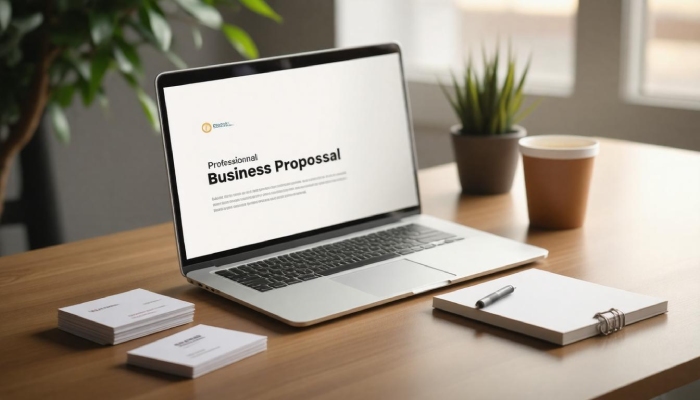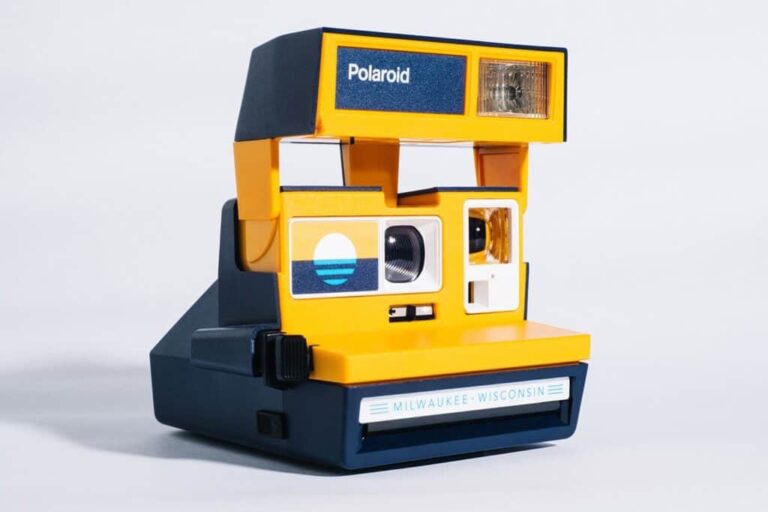How to Write a Business Proposal Email: A Step-by-Step Guide
Writing a business proposal email can feel like a daunting task, but it doesn’t have to be. Think of it as a chance to showcase what you can offer while addressing the needs of your potential client. Imagine you’re sitting across from them in a coffee shop, eager to share ideas and solve problems together. A good proposal email grabs attention right away, providing clarity and direction just like a friendly conversation.
In this guide, we’ll break down the steps to create an engaging and effective business proposal email that makes your recipient feel valued and excited about collaborating with you. Let’s get started!
To write a compelling business proposal email, start with understanding your audience and crafting a strong subject line that captures attention. Then, introduce yourself, outline the problem you aim to solve, detail your proposed solution, highlight the benefits, and conclude with a clear call-to-action encouraging further engagement or discussion.
The Structure of a Business Proposal Email

Subject Line
Starting with the subject line, it carries immense weight in an email marketing proposal. This is your first chance to make an impression and should ideally encapsulate your message’s essence. An engaging subject line might appear simple but requires thoughtful consideration. Imagine receiving an email with the subject “Enhanced Marketing Strategies to Drive Sales.
” Instantly, you recognize the potential value and are likely to click open. Remember, emails featuring personalized subject lines have been shown to have a 26% greater open rate. This emphasizes that a little effort in personalization can yield significant returns.
Introduction
Following the subject line comes the introduction, which sets the tone for your email. It’s your opportunity to build rapport by briefly introducing yourself and your company. If you share any mutual connections—like a colleague or industry peer—mentioning them could add valuable credibility right from the start.
Picture this: instead of a generic greeting, personalizing it to say, “Dear [Recipient’s Name], I’m [Your Name] with [Your Company], and I recently spoke with [Mutual Contact], who thought we should connect.” This approach helps establish trust before moving on to business.
Problem Statement
After you’ve welcomed the recipient warmly, it’s time to address their needs directly.
A clear problem statement follows the introduction, highlighting the client’s pain points. Demonstrating that you understand their challenges makes your proposal much more relatable. You might say something like, “In today’s fast-paced digital landscape, businesses often struggle to maintain a consistent online presence.” This insight shows you’re attuned to their issues and sets the stage for how your solution can offer relief.
Solution Proposal
Next is where the magic happens: the solution proposal. Here, clearly outline how your product or service addresses their specific problems. Provide tangible examples that draw connections between their struggles and your offerings. Instead of burying these benefits in paragraphs of text, opt for clarity with bullet points for easy readability.
For instance:
- Comprehensive social media management tailored to their brand voice.
- Regular analytics and reporting enabling data-driven decisions.
- Tailored content creation boosting engagement effectively.
Transitioning from acknowledging their pain to presenting solutions will foster engagement and demonstrate that you mean business.
Benefits
Now that you’ve laid out your solutions, it’s time to showcase why these solutions matter.
Highlighting benefits goes beyond stating what you offer; it’s about emphasizing why those offerings are valuable. Focus on quantifiable impacts such as return on investment (ROI) or time savings that lead to increased efficiency. Something like “By implementing our strategies, past clients have seen a significant increase in customer engagement and brand visibility,” paints a picture of potential success.
Credentials
With robust benefits outlined, it’s crucial to validate your claims through credibility markers.
Adding a testimonial can fortify your position significantly. This isn’t merely fluff; it reflects real-world successes and makes your assertions more persuasive. Consider including a statement like, “ABC Corp experienced a 40% rise in social media engagement within three months thanks to our personalized marketing strategies.” Such evidence reassures prospective clients they’re investing in proven expertise.
Call to Action
Finally, after building excitement about your offering, it’s pertinent to drive action.
Conclude with an unambiguous call to action (CTA). Encourage them to take the next step while being respectful of their time. Phrases like “Would you be open to discussing this further? How does next week look for us to chat?” invite engagement without being pushy. Clear CTAs not only signal interest but also facilitate moving forward in building professional relationships.
Understanding these structural components enables you to craft compelling business proposal emails while keeping the reader engaged and focused on their needs before moving on to create a captivating opening statement that grabs attention right away.
Crafting an Engaging Introduction

The introduction of your business proposal email serves as your first impression; it lays the groundwork for everything that follows. Imagine walking into a room where you need to make an immediate impact; your introduction must evoke feelings of relevance and urgency. A compelling opening line not only captures attention but also offers context — this is where you set the tone for your entire message.
Starting with a personal touch can create a strong connection with the recipient. For instance, referencing a recent article they wrote or a challenge they mentioned in a previous conversation displays that you’ve done your homework and that you genuinely understand their situation. A line like, “I recently read your insights on the impact of social media for small businesses. It resonated with my work in digital strategy,” immediately showcases your attentiveness and makes you more relatable.
While personal anecdotes can be engaging, others may argue that presenting statistics is a more effective way to grab attention right off the bat.
Statistics can pack a punch when it comes to intrigue. For example, stating something like, “Did you know that 72% of consumers prefer interacting with brands through social media?” not only informs the reader but often prompts further contemplation about their own practices. Data serves as both evidence and motivation for why they should consider your proposal seriously. This dual approach of using both personal experiences and statistical insights can greatly enhance your opening lines.
Remember, clarity is key. Your aim is not to overwhelm them but to pique their interest without losing focus on what matters—solving their problems. It’s often beneficial to funnel any anecdotal or statistical information into the clear articulation of your value proposition within the first few sentences. This will guide your reader smoothly into the core message of your proposal.
Lastly, always keep in mind that your opening sets up expectations for where you’ll take them next within the email. After capturing their interest, ensure you have a clear pathway forward by succinctly outlining how your solutions can meet their needs—this flow will enhance engagement and potentially lead to a call-to-action that feels natural and compelling.
As you finalize the introduction, consider how well you’ve set up the reader for what’s next; a well-crafted introduction will facilitate an easy transition into discussing the body content of your email.
Writing Effective Email Body Content

The main body of your business proposal email should serve as the core of your message, succinctly conveying who you are, what you offer, and why it matters to the recipient. Crafting this section demands a balance between providing detailed information and ensuring it remains accessible to your reader. To achieve this, clarity becomes paramount.
Focus on Clarity
Using straightforward language is key when detailing your proposal. Think of it like peeling an onion; you want the essence without overwhelming layers! For instance, instead of using complex phrases that can confuse, simplify your wording. Imagine writing, “We will help you rank higher on Google searches” rather than “Implement robust, scalable SEO strategies.” This not only enhances understanding but also encourages engagement because the recipient feels they can relate more easily to your words.
As we think about how to present our message clearly, let’s now discuss the impact visuals can have in bolstering that clarity further.
Use Visual Aids
Incorporating visuals is another excellent strategy for enhancing the body of your email. Whether it’s a simple chart or an eye-catching graph, visuals catch the eye and convey information quickly. For example, consider including a graph that illustrates a client’s web traffic growth after utilizing your services. Such visuals provide immediate context and can make a compelling case for your proposal. Statistics become more tangible when paired with graphics, making it easier for recipients to grasp potential benefits instantly.
While textual descriptions and visuals play significant roles in effective communication, sticking to concise points is equally vital.
Brief Bullet Points
- Start with an outline of main points; it serves as a roadmap for the reader.
- Ensure brevity while maintaining informativeness so each point stands as impactful.
- Make certain that these points transition smoothly from one to the next, creating a logical flow that keeps the reader engaged and informed—like guiding them through a well-lit path in unfamiliar terrain.
With these elements in place, you’re well-equipped to move forward with closing your proposals in a way that resonates positively with your audience.
Concluding Positively

The conclusion of your business proposal email serves as your final opportunity to leave a lasting impression. You want to reaffirm the proposal, ensuring that the recipient feels hopeful and motivated about the opportunity. Begin by expressing enthusiasm for collaborating with them—this sets a positive tone. For example, you might say something like, “We are truly excited about the possibility of working together,” which reflects your eagerness and confidence in meeting their needs.
Equally important is to assure them of your capability. Clearly convey that you understand their goals and that your solutions are tailor-made to help achieve them. This could be articulated through phrases such as: “We are confident that our approach will effectively address your unique challenges.” This not only reinforces your expertise but also builds trust, which is vital in any business relationship.
Additionally, consider including a testimony from a satisfied customer who benefited from your service or product. This serves as social proof and can significantly enhance your credibility. For instance, saying something like, “After implementing our strategies, one of our clients, XYZ Corp., saw a remarkable 30% increase in sales,” adds weight to your argument and allows the recipient to visualize the potential success they could achieve.
Following this affirmation, it’s crucial to include a call to action that encourages further interaction. You might say, “Can we schedule a call next week to discuss this proposal in more detail?” This not only invites dialogue but actively involves them in the next step of the process. It shows that you value their input and consider their time just as important—something Nureply also emphasizes in its personalized outreach approach.
As you conclude, ensure that you express appreciation for their time and consideration with a phrase like, “Thank you for taking the time to review our proposal; I look forward to your thoughts.”
By combining enthusiasm, confidence, testimonials, a clear call to action, and gratitude into your closing remarks, you’ll strengthen your proposal and improve the likelihood of a favorable response. Now let’s explore ways to infuse professionalism into every aspect of your communication.
Essential Tips for Professionalism

When crafting a business proposal email, maintaining professionalism is more than just addressing your audience respectfully; it’s about presenting yourself and your organization as credible and trustworthy. One of the foremost tips is to utilize a professional email address. Using an email tied to your business domain signals legitimacy and reliability. Did you know that about 70% of recipients rely on the sender’s email address to gauge professionalism? This subtle choice can set the tone for the entire interaction.
As you draft your email, make sure you balance clarity with conciseness. Busy professionals appreciate brevity; therefore, you’re doing them a favor by getting straight to the point. It’s helpful to structure key points using bullet points or distinct sections. For instance, when discussing the benefits of your proposal, highlight each one in a separate line to enhance readability. Clarity not only improves comprehension but also conveys confidence.
Another essential aspect is proofreading before hitting send. Spelling and grammar errors signal a lack of attention to detail, and research shows that up to 90% of recipients perceive these mistakes as unprofessional. Taking those extra few minutes will pay off by reinforcing the credibility of your message.
Remember: A clear structure enhances your email’s impact. An organized layout doubles the chance of your correspondence being read thoroughly.
Signature
Now let’s discuss the significance of an effective email signature. A well-structured signature should encompass:
- Your full name
- Your position
- Your company name
- Relevant contact information
Consider this example:
John Doe
Marketing Director, XYZ Corp.
john.doe@xyzcorp.com | (123) 456-7890
Beyond simply providing contact details, an effective signature adds a level of professionalism that tells the recipient you take your role seriously. Not only does it offer an easy way for them to reach out, but it also serves as a branding tool subtly reinforcing your company’s identity every time someone sees your message.
Lastly, it’s crucial to avoid casual language or emoticons within your proposal emails, as these can greatly diminish the perceived seriousness of your communication. Rather than striving for approachability in such contexts, aim for engagement through a well-worded message that reflects diligence and respect for your recipient’s time. By adhering to these professional guidelines, you’ll enhance not just this email but establish a foundation for fruitful future interactions.
With these insights into composing a polished business proposal email in mind, we can now journey into practical applications and see what an ideal proposal looks like in action.
Sample Business Proposal Email

To illustrate this, let’s break down the components of a well-crafted business proposal email using a structured example that incorporates all crucial elements. The subject line is your first chance to attract attention, so make sure it’s compelling. For instance, “Innovative Solutions to Elevate Your Online Presence” not only hints at the value you bring but piques interest.
Dear [Recipient’s Name],
In your introduction, provide a brief yet impactful personal connection. You might say something like, “My name is John Doe, and I am the Marketing Director at XYZ Corp. I recently came across your LinkedIn post about the challenges in digital marketing.” This approach shows you’ve done your homework and sets the tone for a personalized conversation.
Next comes the body where you detail the problem your potential client faces. Here, empathy plays a key role: “Many companies like yours struggle with maintaining an effective online presence.” When you express understanding of their pain points, it establishes rapport and positions you as a solution-oriented partner. Following up with statistics can be powerful; for instance, mentioning that “our comprehensive SEO and content creation services have helped similar businesses increase their traffic by up to 40%” adds credibility to your claims.
After presenting the problem and its impact, clearly communicate the solutions you offer. A concise list can help here:
- Comprehensive SEO Management
- Custom Content Creation
- Monthly Performance Analytics
This segment clarifies the tangible steps you can take together. But remember, merely listing services isn’t enough. You need to connect these offerings back to their benefits—“By leveraging our expertise, [Client’s Company] can achieve better visibility and engagement.” You’re articulating how their investment in your services translates into real-world outcomes.
Now that you’ve laid out the problem and proposed your solutions, it’s time to prompt action.
Conclude your email with an impactful call-to-action. A phrasing like, “Can we schedule a call next week to explore this further?” is direct and invites immediate response. It encourages meaningful dialogue while suggesting urgency without being pushy.
Best regards,
John Doe
Marketing Director, XYZ Corp.
john.doe@xyzcorp.com
(123) 456-7890
Finally, don’t forget a professional email signature filled with essential contact details that enhance your credibility. All these components work together harmoniously to create not just an email but an invitation for collaboration.
Each element works synergistically—from introduction to closing—ensuring your proposal resonates with potential clients while engaging them effectively.
This guide provides foundational knowledge for drafting effective business proposals via email. Crafting thoughtful communications lays the groundwork for meaningful business relationships.

Are there any common mistakes to avoid when writing a business proposal email?
Common mistakes to avoid when writing a business proposal email include overly lengthy messages, lack of clarity in objectives, and neglecting to personalize the content for the recipient. Research indicates that emails under 200 words have a 60% higher response rate, emphasizing the importance of brevity.
Additionally, failing to address the recipient’s specific needs or interests can lead to disengagement; tailored proposals increase the likelihood of acceptance by up to 70%. Always remember to proofread for errors and ensure your call-to-action is clear.
What essential elements should be included in a business proposal email?
A business proposal email should include key elements such as a clear subject line, a personalized greeting, an introduction that outlines the purpose, a concise description of the problem and proposed solution, supporting details or statistics, a call to action, and a professional closing. Research shows that emails with clear subject lines are 26% more likely to be opened, making attention to detail vital for engagement.
What tone and language should I use to ensure my proposal is persuasive?
To ensure your business proposal email is persuasive, adopt a professional yet approachable tone that conveys confidence and credibility. Use clear, concise language free of jargon, focusing on the benefits your proposal offers to the recipient. Incorporate compelling statistics or success stories, as studies show that proposals with relevant data are 70% more likely to be accepted. Ultimately, aim to engage your reader emotionally while providing logical reasons for them to consider your proposal seriously.
How can I follow up effectively after sending a business proposal email?
To follow up effectively after sending a business proposal email, wait about 5-7 days before reaching out, as this allows the recipient time to review your proposal. In your follow-up, express genuine interest in their thoughts and ask if they have any questions or need further information.
A study found that 70% of sales professionals successfully engage leads with timely follow-ups, which underscores the importance of persistence without being pushy. Remember to keep your tone friendly and professional to maintain rapport.
How can I customize my proposal email to suit different industries or clients?
To customize your proposal email for different industries or clients, start by researching their specific needs, jargon, and challenges related to their field. Tailor your language to resonate with their expectations—using industry-specific terminology can demonstrate your understanding.
For instance, a 2022 study found that personalized emails, which reflect a sender’s familiarity with the recipient’s business, have a 29% higher open rate compared to generic messages. Additionally, address any sector-specific pain points directly in your proposal to show how your solution uniquely fits their context.







